oceans
Type of resources
Available actions
Topics
Keywords
Contact for the resource
Provided by
Years
Formats
Representation types
Update frequencies
status
Scale
-
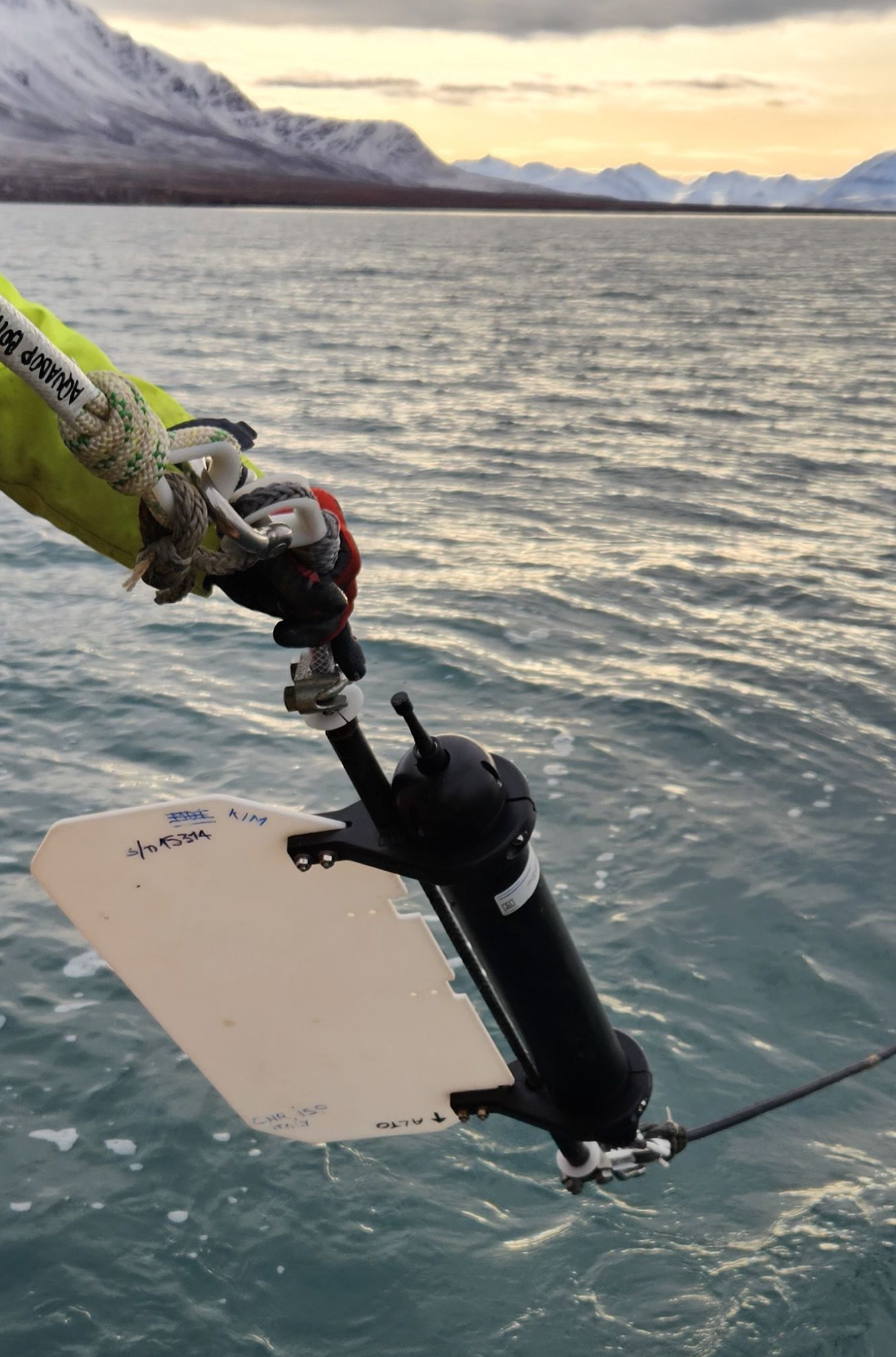
This dataset comprises measurements from a moored single-point acoustic current meter, collected by the Krossfjord Italian Mooring (KIM), which is managed by the Institute of Polar Sciences of the National Research Council (CNR). The data was gathered in the Krossfjord, Svalbard Island, since September 2020. This dataset is also part of the SIOS-Svalbard Integrated Arctic Earth Observing System, developed to observe the impacts of climate change, including the rapid loss of sea ice cover, the retreat of local glaciers, and the Atlantification of Arctic seas. Measured properties are: subsurface temperature and subsurface currents. The acquisition of this time series data is still ongoing and will continue, bolstered by the inclusion of this infrastructure within the framework of the Italian PNRR project ITINERIS. This ensures sustained data collection and further enhances our understanding of the observed environmental changes.
-
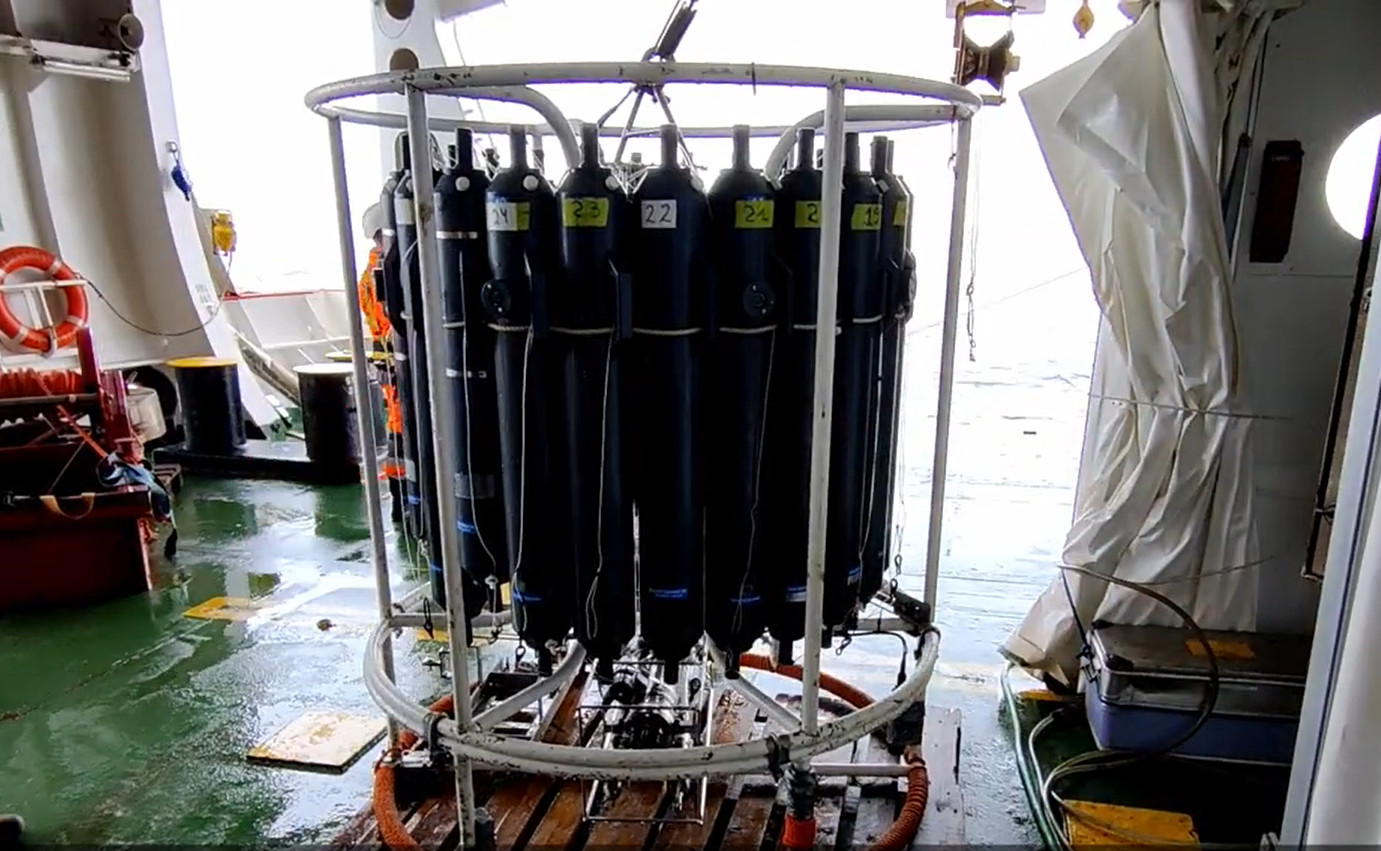
The Italian project CASSANDRA is part of the international framework of the Synoptic Arctic Survey which seeks to collect oceanographic data in the Arctic Ocean in the two-year period 2020-2021 involving the coordination of many research vessels belonging to different nations. The aim is to determine the current state and major ongoing changes in the Arctic marine system by generating an oceanographic dataset that allows for a comprehensive characterization of Arctic hydrography and circulation, carbon uptake and ocean acidification, the distribution of possible pollutants, the functioning and productivity of organisms and ecosystems.
-
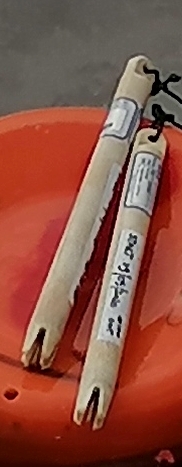
This dataset comprises measurements from thermistor (SBE56) mounted on the Mooring Dirigibile Italia (MDI), which is managed by the Institute of Polar Sciences of the National Research Council (CNR). The mooring is placed in the Kongsfjorden, Svalbard Island, since September 2010 and the thermistor is placed at the nominal depths between 51 and 59 m and is operative from September 2012. This dataset is also part of the SIOS-Svalbard Integrated Arctic Earth Observing System, developed to observe the impacts of climate change, including the rapid loss of sea ice cover, the retreat of local glaciers, and the Atlantification of Arctic seas. Measured properties are: sea-water temperature. The acquisition of this time series data is still ongoing and will continue, bolstered by the inclusion of this infrastructure within the framework of the Italian PNRR project ITINERIS. This ensures sustained data collection and further enhances our understanding of the observed environmental changes.
-

ISotopic and physical-chemical MOnitoring of GLACial drainages and sea water in the Ny-Ålesund area (Svalbard) The dataset includes vertical profiles of physical-chemical performed on-site in different sites along the fjord in Kongsfjorden.
-
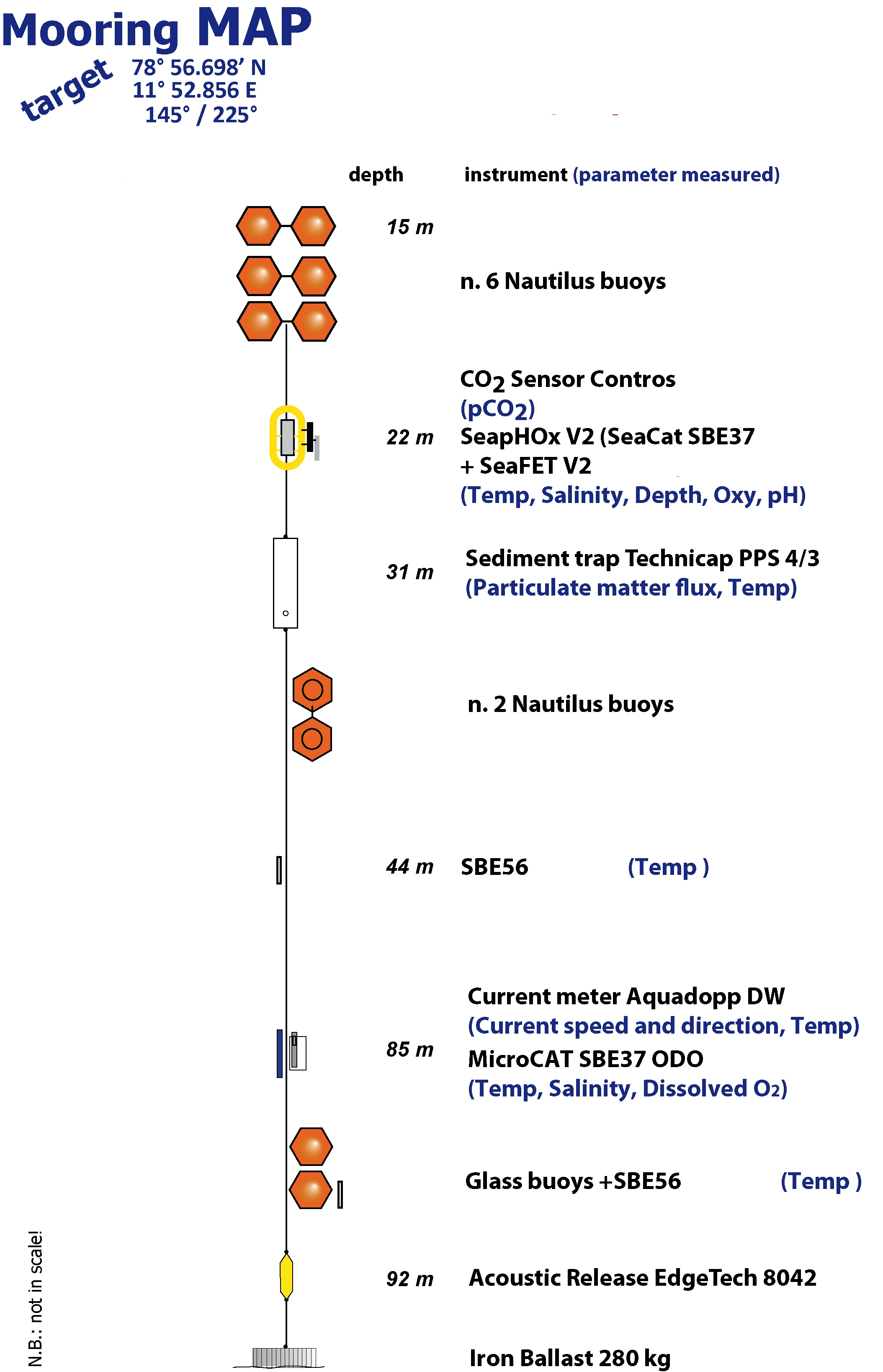
The Aldo Pontremoli Mooring (MAP), operated by the Institute of Polar Sciences of the National Research Council (CNR), has been active in the Kongsfjord, located in the Svalbard archipelago, since September 11, 2020. It is situated near the mouth of Bayelva River mouth and is influenced by land terminating glaciers and the release of permafrost. Currently, the mooring line is equipped with various instruments positioned at depths ranging from 22 to 97 meters within the water column. These instruments collect a wide array of physical and biogeochemical Essential Ocean Variables, including seawater pressure, temperature, conductivity, salinity, currents, dissolved oxygen concentration, pH, particle fluxes and dissolved carbon dioxide concentration. This activity is part of the Svalbard Integrated Arctic Earth Observing System (SIOS), which aims to monitor the impacts of climate change, such as the rapid loss of sea ice cover, the retreat of local glaciers, and the Atlantification of Arctic seas. Time series acquisition is ongoing and will continue, supported by funding from JRA ENI-CNR. The project's goal is to analyse the environmental feeback related to the material released into the marine environment due to permafrost melting. Reactivated permafrost can have significant consequences for both climate and the environment by contributing to the release of greenhouse gases into the atmosphere and pollutants into aquatic ecosystems.
-

This proposal will focus on eutrophication, contaminants, marine litter and underwater noise descriptors of the MSFD. Vertical acquisition in 18 CTD station in Kongsfjorden with water sampling at 2-3 depths (surface, intermediate, bottom) for nutrient and pH analyses of sampled water in the lab
-
Timeseries recorded at the mooring S1, at nominal depth of 1000 m during different deployments. The scope of the measurements is to study the temporal variability of the thermohaline properties of the Norvegian Deep Water, and assosiated deep flow
-

This dataset comprises measurements from thermistor (SBE56) mounted on the Mooring Dirigibile Italia (MDI), which is managed by the Institute of Polar Sciences of the National Research Council (CNR). The mooring is placed in the Kongsfjorden, Svalbard Island, since September 2010 and the thermistor at the nominal depths of 92 and 97 m was operative from June 2017 to August 2020. This dataset is also part of the SIOS-Svalbard Integrated Arctic Earth Observing System, developed to observe the impacts of climate change, including the rapid loss of sea ice cover, the retreat of local glaciers, and the Atlantification of Arctic seas. Measured properties are: sea-water temperature.
-
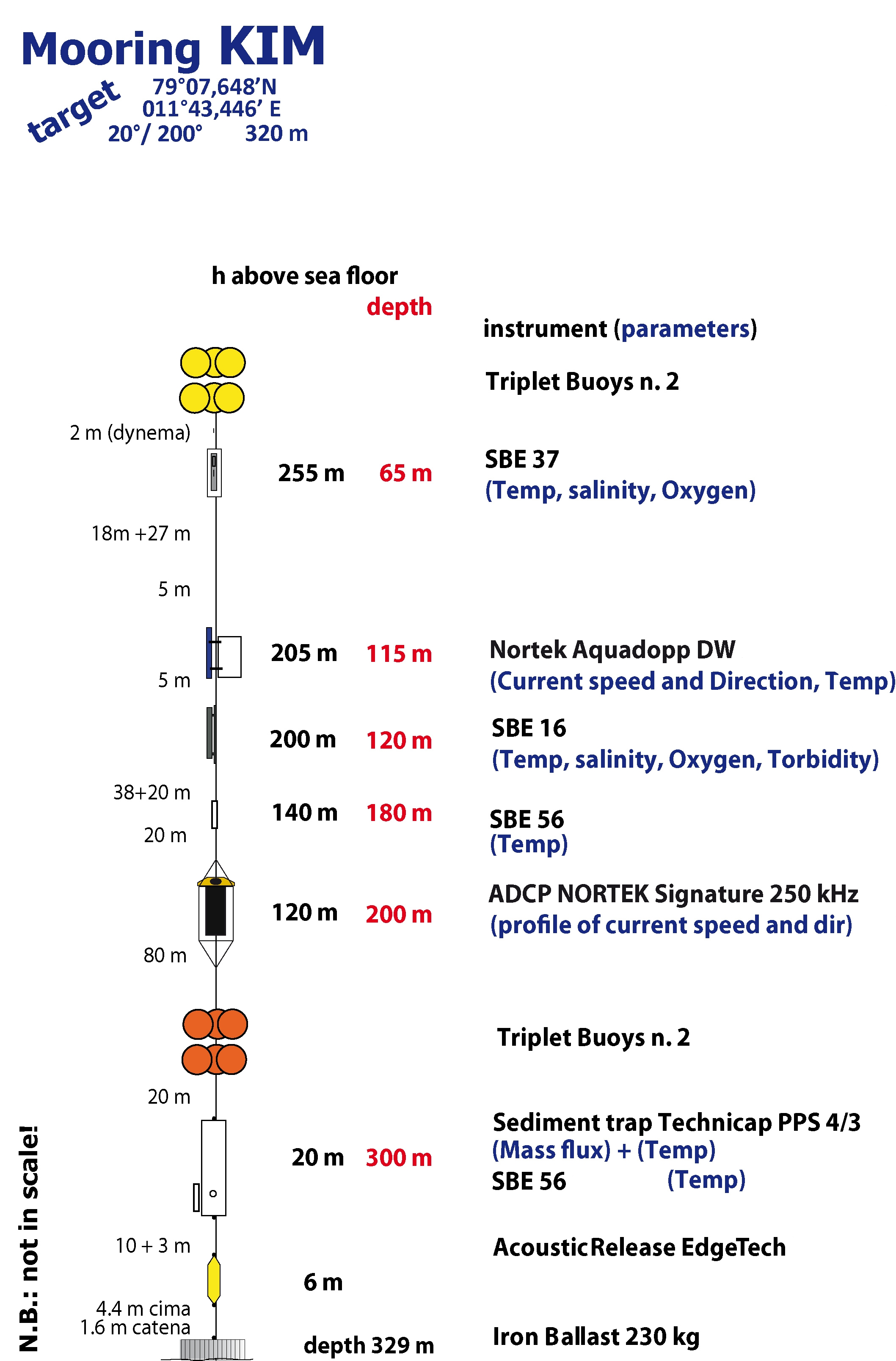
The Krossfjord Italian Mooring (KIM), operated by the Institute of Polar Sciences of the National Research Council (CNR), has been active in the Krossfjord of the Svalbard archipelago since September 9, 2020. The mooring line is equipped with various instruments placed at depths ranging from 65 to 300 meters in the water column. These instruments collect a wide range of physical and biogeochemical Essential Ocean Variables, including seawater pressure, temperature, conductivity, currents, dissolved oxygen concentration, turbidity, particle fluxes and ocean sound. This activity is part of the SIOS (Svalbard Integrated Arctic Earth Observing System), designed to monitor the impacts of climate change, such as the rapid loss of sea ice cover, the retreat of local glaciers, and the Atlantification of Arctic seas. Time series acquisition is ongoing and will continue, supported by the integration of this infrastructure into the Italian Marine Data Portal, developed under the ITINERIS PNRR project. This project also funds the enhancement of the research infrastructure with new sensors to improve measurement resolution, expand the number of EOVs measured, and support the continuous collection of long-term data. These efforts will further deepen our understanding of the observed environmental changes.
-

Time series of marine particles fluxes and its compositions (Time and spatial scale: 15-90 days, fixed depth 83 m, 17 m above bottom). Flux of total mass, TMF, (g m-2 day-1) - Organic Carbon, OC, (per cent) - Calcium carbonate,CaCO3, (per cent) - Biogenic silica, Opal, (per cent) - Lithogenic material, Litho, (per cent) - Delta 13C, d13C, (per mil)